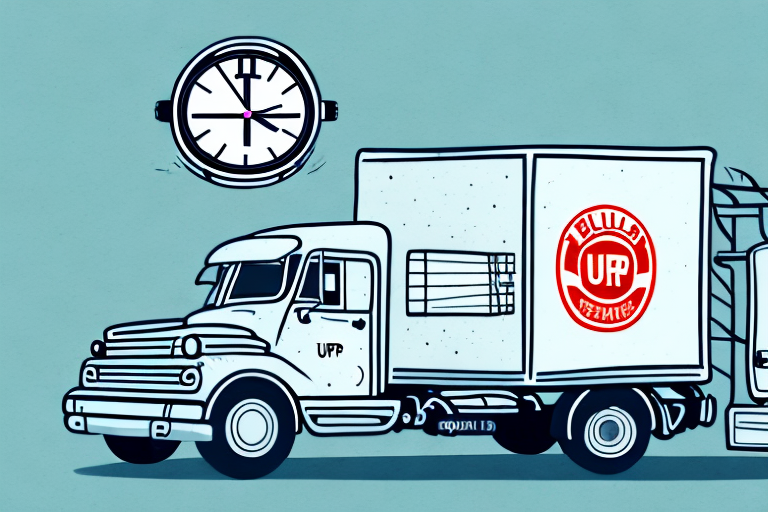How Slower UPS Shipping Rates Can Impact Your Business
In the competitive world of e-commerce, customer satisfaction and retention are paramount to your success. One critical factor that can significantly influence these metrics is the speed of your shipping. If UPS is your primary shipping carrier, you may have observed that their rates for expedited shipping options can be quite costly. However, opting for slower UPS shipping rates might result in more than just minor savings. This article delves into the importance of delivery speed, the ramifications of shipping delays on your business, and effective strategies to balance shipping times and costs.
The Importance of Delivery Speed for E-commerce Businesses
Fast and efficient delivery is a cornerstone of customer satisfaction in e-commerce. Modern consumers prioritize speed and convenience, often willing to pay a premium for expedited delivery. According to a 2023 MetaPack consumer survey, 95% of shoppers consider delivery speed a critical factor when making online purchases, and 58% have abandoned shopping carts due to extended delivery times.
Prompt delivery fosters customer loyalty. When orders arrive swiftly and reliably, customers are more inclined to return to the same retailer for future purchases. Conversely, delays and unreliable shipping can erode trust, leading to negative reviews and diminished brand reputation.
Beyond satisfaction, rapid delivery can differentiate your business in a crowded marketplace. Offering swift shipping options attracts new customers and can significantly reduce cart abandonment rates. Customers are more likely to complete purchases if they are confident their items will arrive quickly.
How Shipping Delays Affect Customer Satisfaction and Retention Rates
Experiencing shipping delays can frustrate customers, leading to decreased satisfaction and lower retention rates. A 2023 study by Dotcom Distribution indicates that 85% of consumers view on-time delivery as essential for repeat purchases, and 40% are unlikely to return to a retailer after a poor shipping experience.
Shipping delays can also generate negative reviews and detrimental word-of-mouth. Customers receiving late orders may leave unfavorable feedback on e-commerce platforms or social media, undermining your brand's credibility. According to BrightLocal's 2023 survey, 90% of consumers trust online reviews as much as personal recommendations.
In contrast, reliable and fast shipping enhances customer satisfaction and loyalty. Providing free or discounted shipping, comprehensive tracking information, and ensuring timely deliveries contribute to a positive shopping experience. MetaPack's recent survey found that 94% of consumers are more likely to shop again with a retailer that offers a seamless delivery experience.
The Role of Shipping in Building Brand Loyalty
Shipping excellence is integral to cultivating brand loyalty. As delivery speed increasingly influences customer satisfaction, consistently meeting or exceeding delivery expectations can establish a loyal customer base. A Deloitte survey from 2023 revealed that 73% of consumers are more likely to repurchase from retailers offering fast and free shipping.
Beyond speed and cost, offering flexible delivery options reinforces brand loyalty. Customers value the ability to select delivery times that align with their schedules, whether it's same-day, next-day, or specific future dates. Providing detailed tracking information and updates boosts trust and confidence in your brand. By prioritizing versatile shipping and delivery options, you foster a positive customer experience that encourages repeat business and strengthens brand loyalty.
The Link Between Shipping Times and Cart Abandonment Rates
Extended shipping times during the checkout process can lead to increased cart abandonment. According to a 2023 report by the Baymard Institute, high shipping costs are the leading cause of cart abandonment, cited by 59% of respondents, while prolonged delivery times account for 16%.
To mitigate cart abandonment, businesses should prioritize fast and affordable shipping options. Implementing free shipping thresholds or discounted rates for larger orders can incentivize customers to finalize their purchases. Additionally, providing clear estimated delivery dates and comprehensive tracking information can reassure customers, reducing hesitancy to complete transactions.
How to Evaluate the True Cost of Slower UPS Shipping Rates on Your Business
While slower UPS shipping rates might appear cost-effective initially, it's essential to assess their true impact on your business. Consider factors such as diminished customer satisfaction, lower retention rates, increased cart abandonment, and potential revenue loss from customers turning to competitors with faster shipping options. Often, the long-term costs of slower shipping outweigh the immediate savings.
Another critical aspect is your brand's reputation. Slow shipping can lead to negative reviews and tarnish your brand image, resulting in decreased customer trust and reduced acquisition rates. Furthermore, slower shipping may not be feasible for all product types, especially perishable or time-sensitive items, necessitating the use of faster, more reliable shipping options to ensure product integrity and customer satisfaction.
Strategies for Reducing Shipping Times and Costs
Achieving a balance between shipping speed and cost is achievable through several strategies:
- Negotiate Shipping Rates: Engage with UPS and other carriers to negotiate better shipping rates based on your shipping volume and commitment.
- Explore Alternative Carriers: Consider local or regional carriers that may offer competitive rates and faster delivery times for specific areas.
- Optimize Packaging and Fulfillment: Streamline your packaging processes to reduce size and weight, thereby lowering shipping costs and enhancing delivery efficiency.
- Implement an Inventory Management System: Utilize real-time inventory management to prevent stockouts, optimize shipping routes, and minimize the number of shipments required.
Implementing these strategies can lead to significant cost savings and improve delivery times, enhancing overall customer satisfaction.
Ways to Keep Customers Satisfied Despite Slower Delivery Times
Even when shipping times are longer than desired, businesses can maintain customer satisfaction through proactive measures:
- Transparent Communication: Keep customers informed about shipping times and any potential delays through regular updates via email or SMS.
- Offer Incentives: Provide free shipping options or discounts to offset the impact of slower delivery times.
- Alternative Delivery Options: Offer choices such as in-store pickup or curbside delivery to cater to customers seeking faster options.
- Provide Detailed Tracking Information: Allow customers to monitor the status of their orders, reducing uncertainty and anxiety.
- Responsive Customer Service: Address any issues or complaints promptly and offer compensations or sincere apologies to maintain trust.
The Impact of Slower Shipping on Your Bottom Line: Calculating the Costs
Assessing the financial implications of slower shipping involves evaluating several factors:
- Customer Satisfaction and Retention: Lower satisfaction can lead to reduced repeat business and higher customer acquisition costs.
- Shipping Costs vs. Lost Sales: While slower shipping might reduce immediate shipping expenses, it can result in significant lost sales over time.
- Reputation Management: Negative reviews and diminished brand reputation can have long-term financial repercussions.
Businesses should perform a comprehensive cost-benefit analysis to determine whether the savings from slower shipping rates justify the potential losses in revenue and growth.
The Role of Communication in Managing Customer Expectations During Slow Shipping Periods
Effective communication is vital in managing customer expectations when facing slow shipping periods:
- Automated Notifications: Implement automated emails or text messages to keep customers updated on their order status and any delays.
- Clear Shipping Policies: Maintain a transparent shipping policy that outlines expected delivery times and potential delays, making it easily accessible on your website and order confirmations.
- Proactive Solutions: Offer alternatives such as expedited shipping options or discounts on future purchases to mitigate customer frustration.
By maintaining open and honest communication, businesses can reduce customer dissatisfaction and preserve trust even during challenging shipping periods.
Best Practices for Navigating Seasonal Fluctuations in Shipping Times and Rates
Seasonal peaks, such as holiday periods, can strain shipping resources, leading to delays and increased rates. To navigate these fluctuations effectively:
- Advance Planning: Forecast demand and adjust your shipping strategy in anticipation of peak seasons. This may involve increasing inventory levels or hiring temporary staff.
- Flexible Shipping Options: Partner with multiple carriers to ensure capacity and negotiate better rates during high-demand periods.
- Enhanced Communication: Inform customers in advance about potential delays and set realistic expectations regarding delivery times.
- Outsource Fulfillment: Consider outsourcing fulfillment to third-party logistics providers to handle increased order volumes efficiently.
Implementing these best practices ensures that your business remains resilient and responsive during seasonal shipping challenges, maintaining customer satisfaction and operational efficiency.
How to Leverage Slower UPS Shipping Rates for Business Growth Opportunities
While slower UPS shipping rates may pose challenges, they also present opportunities for strategic growth:
- Promotional Strategies: Use slower shipping options as part of promotional deals, such as offering lower prices for extended delivery times.
- Tiers of Service: Provide tiered shipping options, allowing customers to choose based on their urgency and budget.
- Bundling Products: Combine products into bundles to optimize shipping costs and provide added value to customers.
- Value-Added Services: Offer free gifts or loyalty points for customers who opt for slower shipping, enhancing the overall value proposition.
By creatively integrating slower shipping options into your business model, you can enhance customer satisfaction, manage costs effectively, and drive business growth.
In conclusion, while slower UPS shipping rates can impact various aspects of your e-commerce business, strategic planning and effective management can mitigate negative effects. Prioritizing delivery speed, optimizing shipping strategies, and maintaining transparent communication are essential to enhancing customer satisfaction, boosting retention rates, and improving your overall bottom line.






















